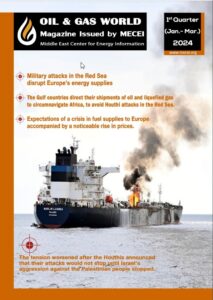Agreement on Oil Production Rates.. Saudi Arabia and Russia at Crossroads

Russia announced a few days ago that it will not support further cuts in oil production from OPEC+. This was followed by a notable decline in crude oil prices, to reach today at $37 a barrel (Brent crude). There is nothing to prevent the decline in prices to reach the price levels of 2016 when Saudi Arabia was leading OPEC countries towards lowering oil prices targeting stopping the production of American shale oil and forcing its producers out of the market.
Many industry analysts expect that oil prices may continue to decline, especially after the price war began between the poles of the major oil producers (Saudi Arabia, the United States and Russia), and the flow of huge new quantities of oil to the oversupplied market coinciding with the decline in demand caused by the effects of the Coronavirus.
Some analysts (the Middle East Energy Information Center) expecting that prices may retreat from their current level of $37 for Brent crude, to settle at $32 a barrel during the summer months of 2020, and this is based on the potential for coherence in demand for oil due to the success of international efforts to curb the negative aspects of the spread of the Coronavirus.
There is no doubt that the current decline in oil prices will harm all producers. Given the budgets of the producing countries, Saudi Arabia will be the worst affected as the Saudi budget parity price is $84 per barrel of Brent crude, while Russia will be in a relatively better position because the parity price in Russia’s budget is $40 a barrel for Brent crude, and the least affected will be the US shale oil producers who can continue production even if prices drop to $35 a barrel.
As a huge consumer of oil, the United States may get benefits from the drop in oil prices, as it may lead to a decrease in gasoline prices in the American local market, which would raise the chances of the US President in the election year.












